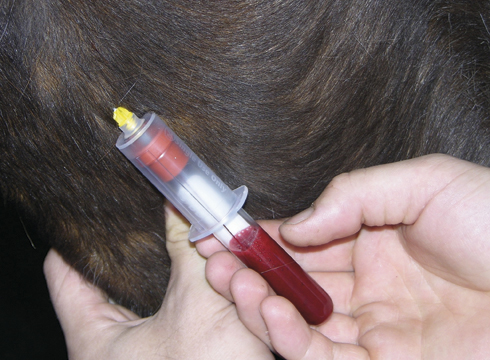Most horseowners are familiar with the concept of blood testing, but how much do you really know about blood and how and when it can be used to diagnose disease in horses?
Blood is a liquid tissue composed of a solution of electrolytes (salts) containing cells and proteins. It has a variety of functions, from transporting oxygen, carbon dioxide, nutrients, hormones and many other substances around the body to regulation of the body’s temperature.
To understand its functions, we need to look at the major components of equine blood separately.
Blood cells
There are three main types of cells in blood:
- red blood cells (RBCs or erythrocytes)
- white blood cells (WBCs or leucocytes)
- platelets (karyocytes)
Red blood cells are the most common cells. They are fairly simple cells whose principle role is to transport oxygen from the lungs to the tissues and to take carbon dioxide from the tissues to the lungs.
As oxygen is soluble in blood, why are RBCs necessary? If oxygen was only carried in solution in the blood, the amount of blood needed to be pumped around the body would be impossibly high. Instead oxygen is transported via a carrier molecule, called haemoglobin. When oxygen is attached to haemoglobin, blood can carry many times more oxygen than would be possible in solution.
White blood cells form a part of the immune system. They are far less numerous than RBCs. There are five major types of WBC: neutrophils, lymphocytes, eosinophils, monocytes and basophils – each performing a different function.
Platelets are a smaller type of cell which are involved in the clotting mechanism that repairs damaged blood vessels.
The fluid part of blood is known as plasma. It is a complex solution of electrolytes (salts), the ones present in the largest quantities being sodium and chloride. The plasma also contains proteins, which have a range of functions, including the maintenance of blood volume and the transport of many of the substances carried by blood. Specific plasma proteins include antibodies and clotting factors.
What can blood tell us?
Since blood has an intimate role in the metabolism of most body tissues, changes in its composition can be a very effective way to diagnose disease.
It is important that clinicians using blood test results do not interpret them in isolation, but in the light of the overall clinical features of the case. All of the components of blood can hold useful information for the diagnosis of disease.
Variations in the number of white blood cells can give us important clues, among other things, as to whether an inflammatory process is present in the patient.
While you might expect the response to infection and other forms of inflammation to be an increase in the WBC count, this is not always the case. The WBC count and the proportion of the different types of WBCs varies according to the nature and duration of the patient’s disorder.
A common misconception is that it is possible to definitively distinguish between viral and bacterial infections on the basis of the proportion of white blood cells present in a sample.
It is important to remember that while the analysis of blood is a useful aid to the diagnosis of disease, it is no substitute for a full clinical examination.
The results of blood tests must be interpreted in the light of the clinician’s other findings about the patient’s health in order to arrive at as accurate a diagnosis as possible.
In other words, analysis of blood can be a very helpful diagnostic aid for the veterinarian, but it is not a magic test that always provides simple answers.



